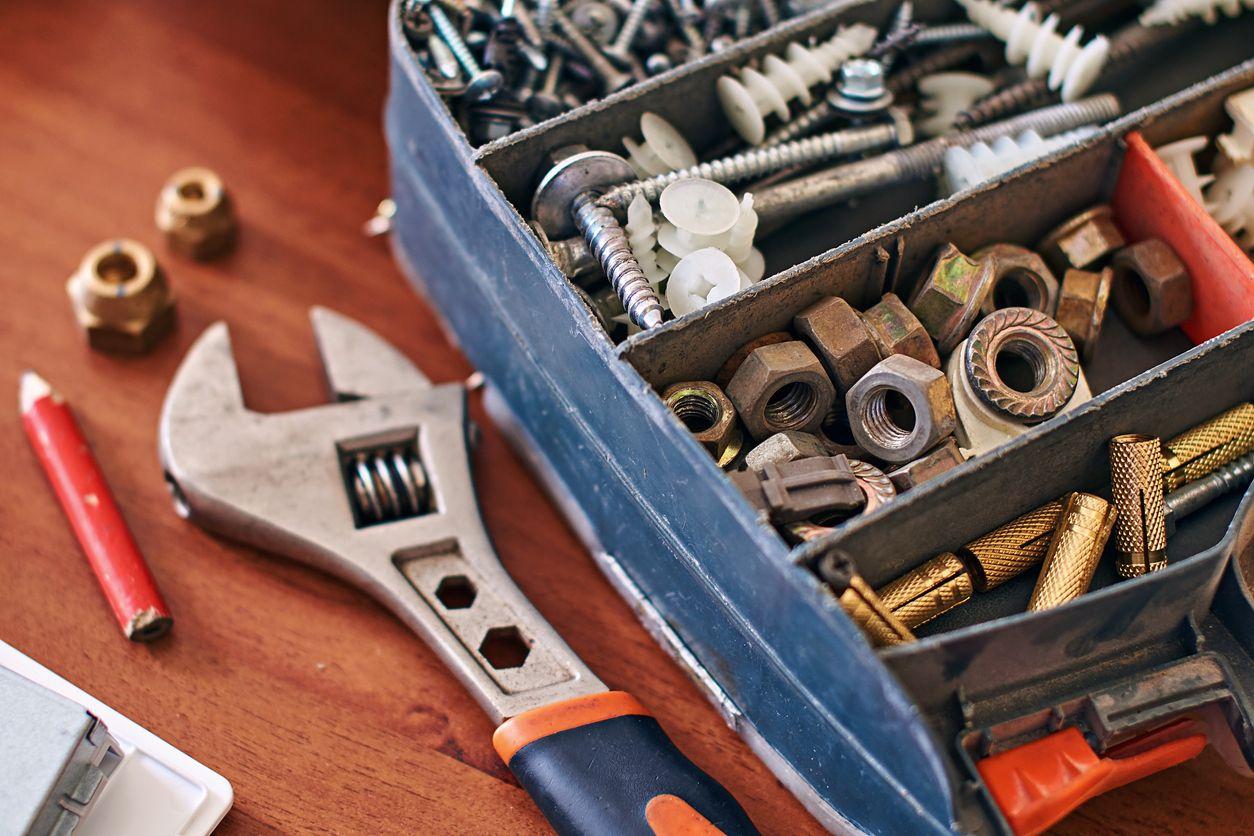How to Keep Your Residential Plumbing Supplies Organised
For tradies, property managers, and facility managers alike, time is money. When it comes to residential plumbing, staying organised with your supplies can mean the difference between a quick, efficient job and a time-consuming search for the right part. If you’re juggling various plumbing tasks, a well-organised system can ensure you always have the correct residential plumbing supplies on hand, precisely when you need them.
Let’s explore effective ways to keep your residential plumbing supplies neatly stored and accessible, saving you both time and effort on the job. From practical storage ideas to simple organisational tips, you’ll learn how to create a streamlined approach that boosts efficiency, reduces downtime, and keeps your workday running smoothly.
Why Organisation Matters for Your Residential Plumbing Supplies
Efficient organisation of plumbing supplies isn’t just about tidiness; it’s about creating an optimal work environment that allows you to deliver faster, higher-quality results. Here’s why it matters:
- An organised setup allows you to locate tools and parts quickly, avoiding unnecessary delays and allowing you to focus on the task at hand.
- By keeping track of inventory, you can avoid duplicate purchases, prevent wastage, and manage stock effectively.
- With an organised system, you’ll work faster and with fewer interruptions, making your day more productive and reducing the frustration of misplaced parts.
Step 1: Assess Your Residential Plumbing Supplies
Before implementing any organisational system, take stock of your current inventory. This means reviewing what you already have, noting down frequently used items, and identifying rarely used or obsolete supplies. Here’s how to get started:
- Inventory Check
- Make a list of your most common residential plumbing supplies. For tradies, this could include pipe fittings, valves, sealants, washers, and taps. Take note of how many you have of each item and their condition.
- Group by Type and Frequency of Use
- Once you have a complete inventory, categorise supplies based on how often you use them. Commonly used items should be easily accessible, while rarely used parts can be stored separately.
Step 2: Invest in Quality Storage Solutions
Investing in durable storage solutions is essential for keeping your residential plumbing supplies in optimal condition. Here are some practical storage ideas:
- Shelving Units
Sturdy shelving units provide easy access to supplies and keep everything visible. Consider adjustable shelves to accommodate different sizes of plumbing parts, from pipe sections to tool cases. Label each shelf for quick identification.
- Clear Storage Containers
Clear plastic containers are ideal for storing small plumbing parts, such as washers, nuts, bolts, and valves. Label each container with its contents and stack them in an accessible area. Using clear containers allows you to see what’s inside without needing to open each one.
- Toolboxes and Portable Organisers
If you often travel to residential job sites, toolboxes and portable organisers are a great option. Use these to store smaller supplies and tools that you’ll need on hand. Look for organisers with multiple compartments so you can keep different parts separated.
- Drawer Dividers and Trays
For organising within cabinets or drawers, dividers and trays are helpful for separating various types of fittings and components. This is especially useful for small items, helping you avoid the frustration of sifting through mixed supplies.
- Pegboards for Tools
Pegboards are a versatile way to organise your plumbing tools, giving you instant access to items such as pipe wrenches, pliers, and tubing cutters. Mounting a pegboard on your wall keeps your tools visible and within easy reach.
Step 3: Label Everything
Labels are your best friend when it comes to staying organised. Proper labelling helps you instantly locate the correct plumbing supplies without having to sort through boxes or bins. Here’s how to label effectively:
- Clear Labels
- Make labels that are easy to read at a glance. Opt for larger fonts and durable, waterproof labels.
- Colour Coding
- Consider using colour-coded labels for different types of supplies. For example, use blue labels for pipe fittings, red for valves, and green for washers. This visual cue can make it quicker to locate items.
- Update as You Go
- Make it a habit to update labels if you relocate or repurpose storage containers. Outdated labels can lead to confusion and slow down your workflow.
Step 4: Create a Digital Inventory System
Maintaining a digital inventory of your residential plumbing supplies can streamline your work even further. A simple spreadsheet or an inventory management app can make it easier to track supplies, re-order parts, and manage stock levels. Here’s how to implement a digital system:
- Set Up a Spreadsheet
- Create a basic spreadsheet listing each item’s name, quantity, and location. Update it each time you add or use a supply.
- Use Reorder Reminders
- Some inventory apps offer reorder alerts. Set these up to notify you when stock is low on essential items, so you can restock before running out.
- Categorise by Job Type
- If you work on a variety of residential plumbing jobs, consider categorising supplies by job type, such as “bathroom plumbing” or “kitchen fixtures.” This will help you quickly gather what you need for specific tasks.
Step 5: Prioritise Frequently Used Supplies
When organising your residential plumbing supplies, ensure that frequently used items are within easy reach. This saves time and reduces the need to search through rarely used supplies. Here are some tips:
- Place commonly used supplies at the front of shelves or in easily accessible drawers. Items like pipe fittings, seals, and basic tools should be readily available.
- For seasonal plumbing supplies, such as winter-proofing parts or specific outdoor fittings, use a rotational storage system. Move these items to the front when they’re in demand, and shift them back during the off-season.
Step 6: Develop a Restocking Routine
A regular restocking routine will ensure you’re always prepared with the right supplies on hand. Set aside time weekly or monthly to review your inventory levels, especially for frequently used items.
Here’s an easy restocking process to follow:
- Check Stock Levels
- At the end of each week or job, check your stock levels for critical supplies. Note down any low supplies or items that need replacing.
- Order in Bulk When Possible
- Purchasing essential items in bulk can save you money and prevent frequent reordering. Just make sure you have sufficient storage space for bulk items.
- Monitor Expiration Dates
- Some supplies, such as sealants or pipe adhesives, may have expiration dates. Regularly check and replace expired items to avoid issues on the job.
Step 7: Maintain Cleanliness and Order
Keeping your workspace clean and organised not only promotes efficiency but also makes for a safer work environment. Set up a system for maintaining order in your storage area:
- Weekly Clean-Up
- Spend a few minutes each week tidying up your storage space, ensuring all tools and supplies are in their designated spots.
- Dispose of Obsolete Supplies
- As part of your clean-up routine, discard or donate supplies you no longer need. Outdated or worn-out supplies can clutter your storage and make it harder to find what you need.
- Revisit Your System Regularly
- Organisation is an ongoing process, so take the time to review and refine your system periodically. Adjust as needed to keep your residential plumbing supplies in optimal order.
Benefits of an Organised System for Residential Plumbing Supplies
Organising your residential plumbing supplies offers significant advantages, particularly when managing multiple jobs or working on a tight schedule. Here’s what you can gain:
- You’re more efficient
- With everything in its place, you can spend less time searching and more time working, boosting your overall productivity.
- You’re less stressed
- Knowing exactly where to find each part and tool can make your day less stressful, especially when working on complex plumbing jobs.
- You have better control over inventory
- Keeping track of supplies means fewer accidental purchases and better control over your inventory, ultimately saving money.
- You look more professional
- An organised workspace reflects positively on your work ethic, showcasing professionalism to clients and colleagues alike.
Conclusion: Shop for Your Residential Plumbing Supplies at PlumbingSales.com.au
Keeping your residential plumbing supplies organised is key to maximising efficiency and delivering quality work. From investing in quality storage solutions to setting up a digital inventory system, these strategies will help you maintain an orderly setup, improve productivity, and prevent costly downtime. An organised approach not only saves time but also boosts your workday’s overall flow, making it easier to tackle any plumbing job that comes your way.
If you're looking to expand or replenish your inventory, head to PlumbingSales.com.au for a comprehensive range of residential plumbing supplies. With everything from pipe fittings to tools, we provide tradies, property managers, and facility managers with the essential supplies needed to keep your projects on track. Explore our collection today and take the hassle out of keeping your plumbing supplies fully stocked and well-organised.


